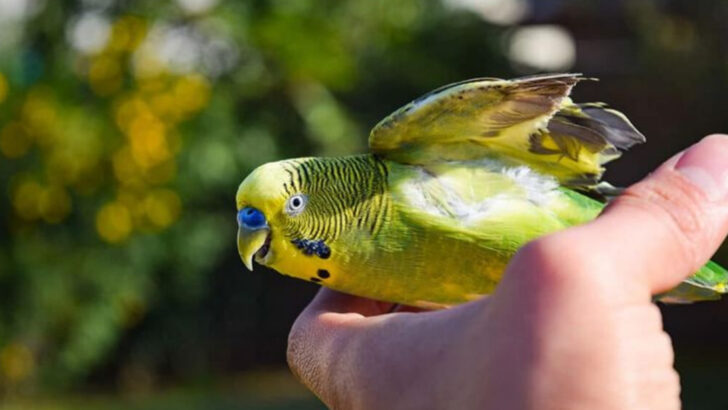Don’t let the size fool you—these birds pack serious personality.
Budgies and parrotlets may look like feathered cousins at a glance, but they’re more like distant relatives with wildly different lifestyles. One is the bubbly extrovert of the bird world, chirping up a storm and loving the spotlight. The other? A pint-sized powerhouse with an attitude big enough to boss around birds twice its size.
They may both fit in the palm of your hand, but their needs, temperaments, and quirks couldn’t be more different.
Before you fall for a cute beak and colorful feathers, you need to know what you’re really signing up for.
Because choosing between these two isn’t just about looks—it’s about finding your perfect match in the bird world.
Size and Appearance
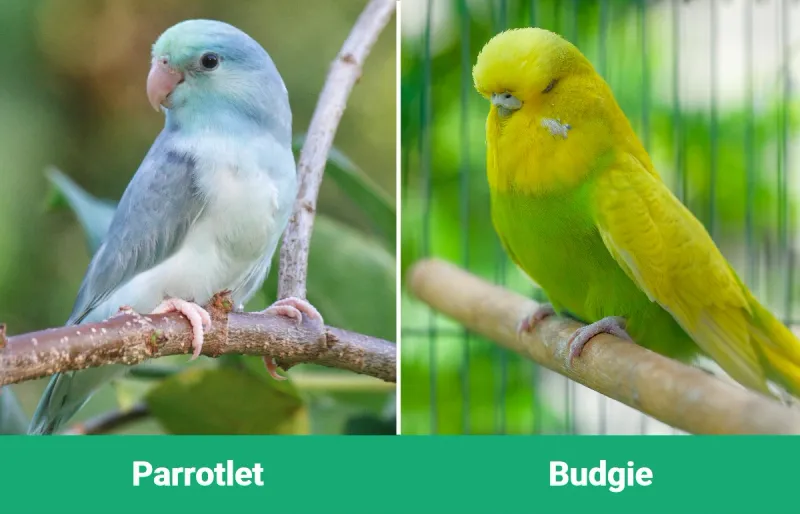
Budgies, often referred to as parakeets, are generally larger than parrotlets, with longer tails and slimmer bodies. Their vibrant feathers typically display a mix of greens, blues, and yellows, creating a visual spectacle. In contrast, parrotlets are more compact, with a robust build and shorter tails. They often boast bold, solid colors like cobalt, green, or yellow. This size difference is more than just visual; it impacts their living requirements, behavior, and even the way they interact with their environment.
Temperament and Behavior
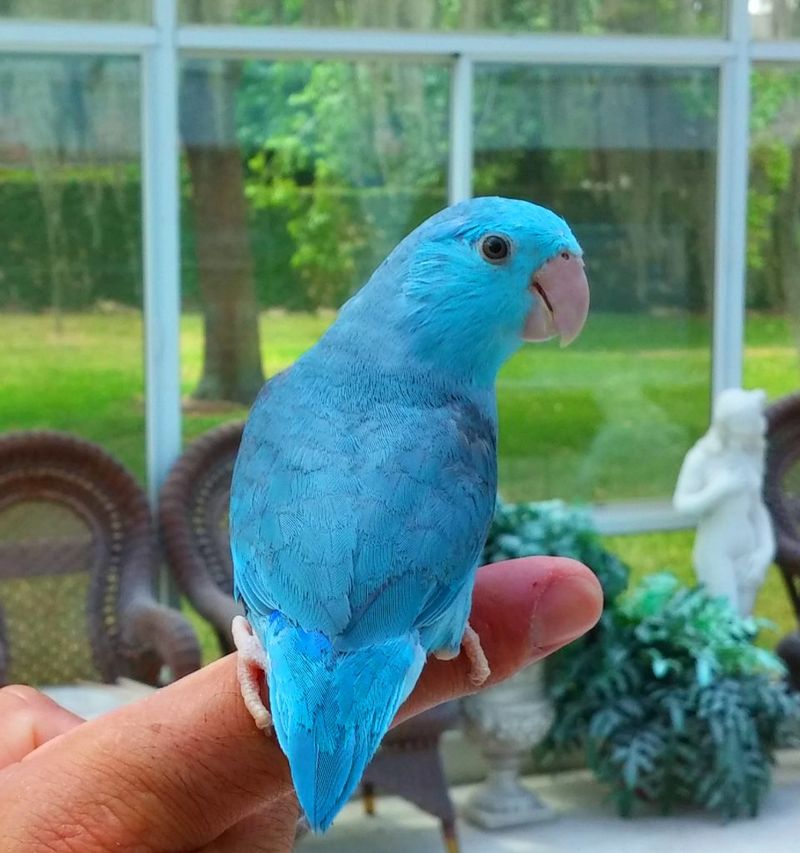
The personalities of budgies and parrotlets can vary significantly. Budgies are known for their playful and social nature, often enjoying the company of other birds. Their friendly demeanor makes them popular among families. Parrotlets, however, are known for their assertive and bold personality. They might be small, but they carry a big attitude. This distinct difference in temperament can affect how each bird interacts with humans and other pets, making it a crucial point to consider for prospective bird owners.
Vocalization
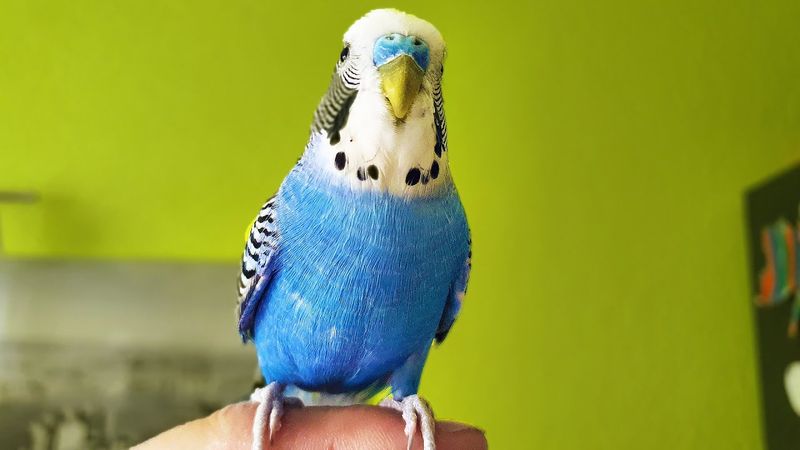
Budgies are renowned for their chattiness, often filling rooms with cheerful chirps and the occasional attempt at mimicry. They are social talkers, engaging with their human companions vocally. Parrotlets, on the other hand, tend to be much quieter. Their vocalizations are more subdued, often limited to soft peeps and chirps. This difference in noise level can be a deciding factor for individuals living in noise-sensitive environments, such as apartments or shared living spaces.
Lifespan
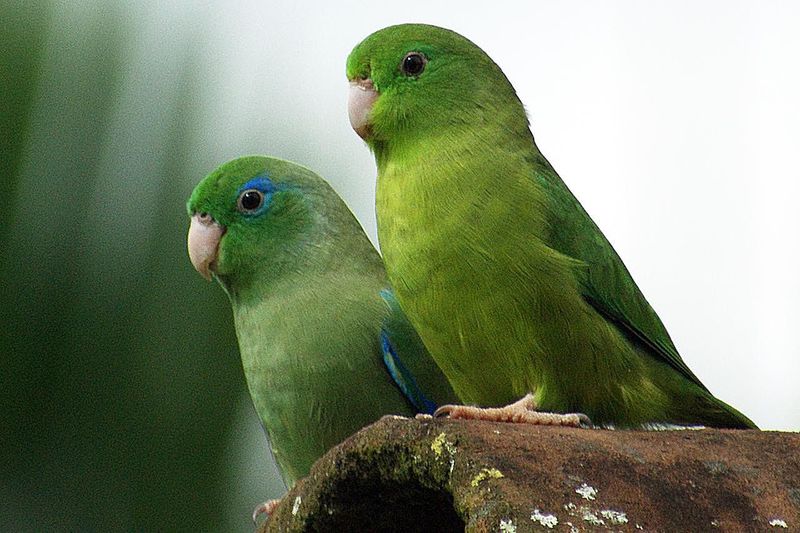
Budgies typically have a lifespan of 5 to 10 years, depending on their care and living conditions. With proper nutrition and a stress-free environment, they can live longer. Parrotlets, however, often outlive budgies, with lifespans ranging from 15 to 20 years. This difference in longevity is pivotal for potential owners to consider, as it represents a long-term commitment to caring for the bird. Understanding the lifespan of each can help in preparing for the future responsibilities of pet ownership.
Dietary Needs
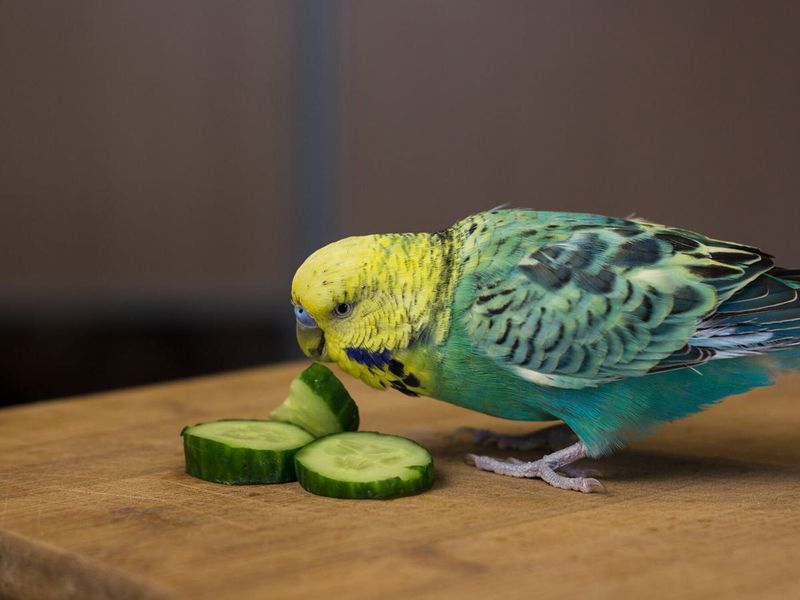
Budgies and parrotlets, like all birds, require a balanced diet to thrive, but their dietary needs can differ. Budgies often enjoy a diet that includes a mix of seeds, fruits, and vegetables, along with occasional treats. Parrotlets, being slightly different in metabolism, might require more variety and specific nutrients, including more fresh greens and specialized pellets to maintain their health. Understanding these dietary differences ensures that each bird receives nutrition tailored to its needs, promoting overall well-being.
Social Needs
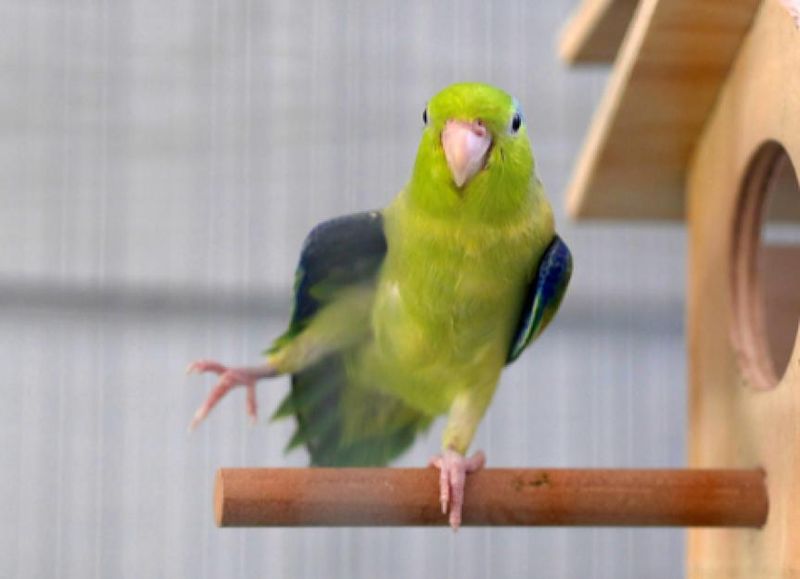
Budgies are inherently social creatures, thriving in environments where they can interact with other birds or their human companions. They thrive in flocks, which is why many owners prefer to keep them in pairs or small groups. Parrotlets, despite their small size, are more independent. They usually form strong bonds with one person and might not require the constant companionship of other birds. This contrast in social needs highlights the importance of understanding the individual care requirements for each species.
Space Requirements
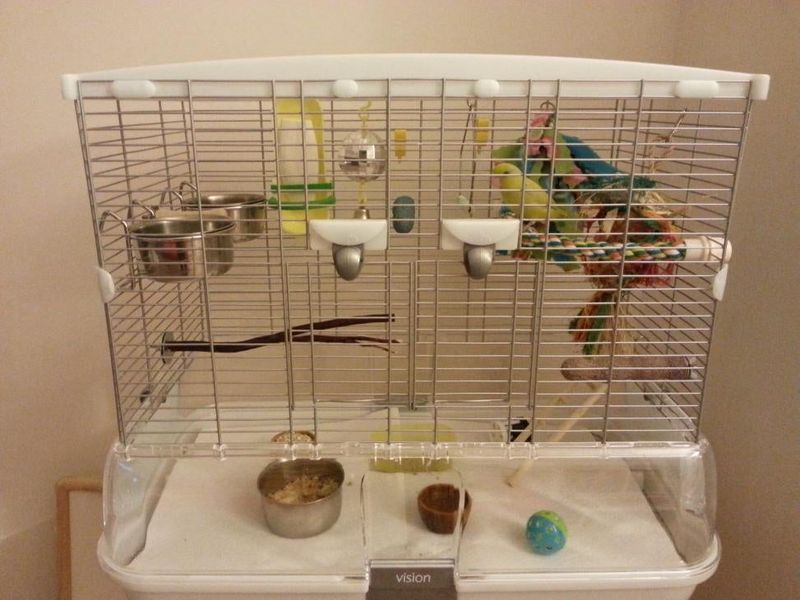
The spatial requirements of budgies and parrotlets reflect their size and behavior. Budgies, being slightly larger and more active, benefit from larger cages that allow them to fly and explore. Their playful nature means they require plenty of toys and perches to keep them entertained. Parrotlets, while also active, need less space due to their smaller size, but they still appreciate room to move. However, both birds will enjoy out-of-cage time to exercise and interact with their environment.
Training and Intelligence
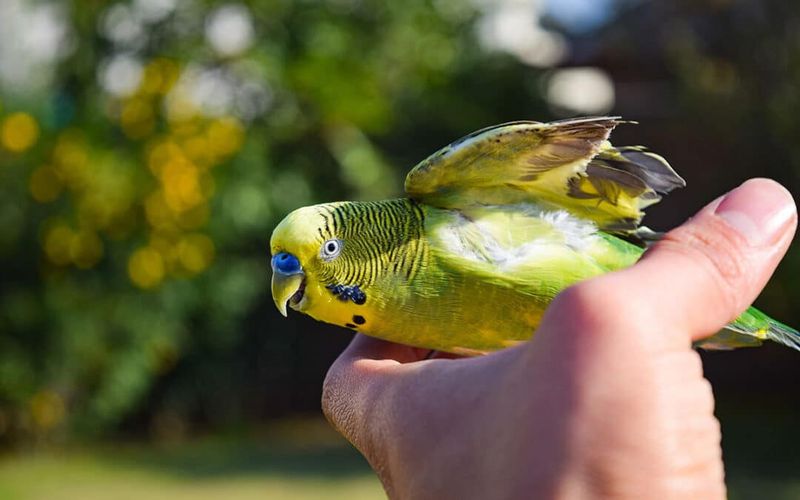
Both budgies and parrotlets are intelligent birds capable of learning tricks and commands. Budgies are often quick learners, able to mimic sounds and perform various tricks with proper training and patience. Parrotlets, although less inclined to mimic, exhibit problem-solving skills and can learn complex tasks. This difference in training potential highlights their unique cognitive abilities, making them engaging companions for bird enthusiasts who enjoy interactive play and mental stimulation with their pets.
Color Variations
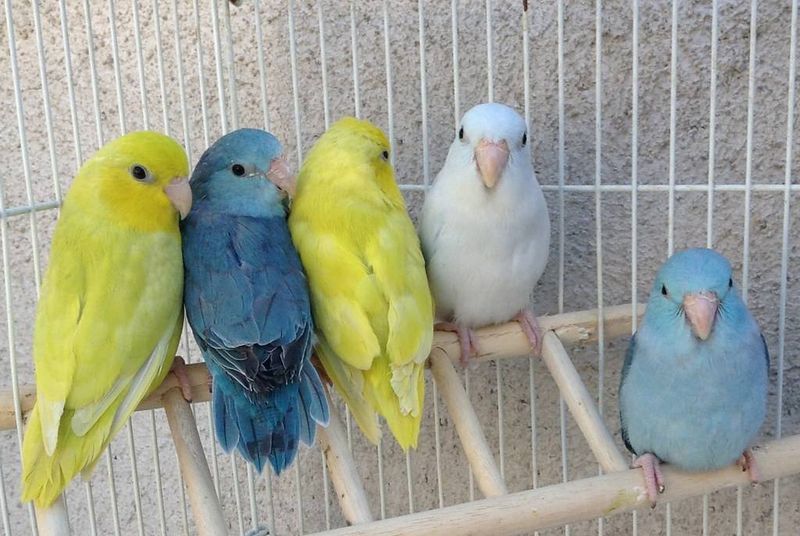
Budgies are renowned for their extensive range of color mutations, from vibrant greens and blues to rare hues like violet and grey. This variety makes them particularly appealing to those who appreciate aesthetic diversity. Parrotlets also boast a range of colors, though they tend to feature more solid and vivid tones such as cobalt blue and bright green. While both birds are visually stunning, the difference in color variations offers potential owners a choice based on personal preference for plumage.
Noise Level
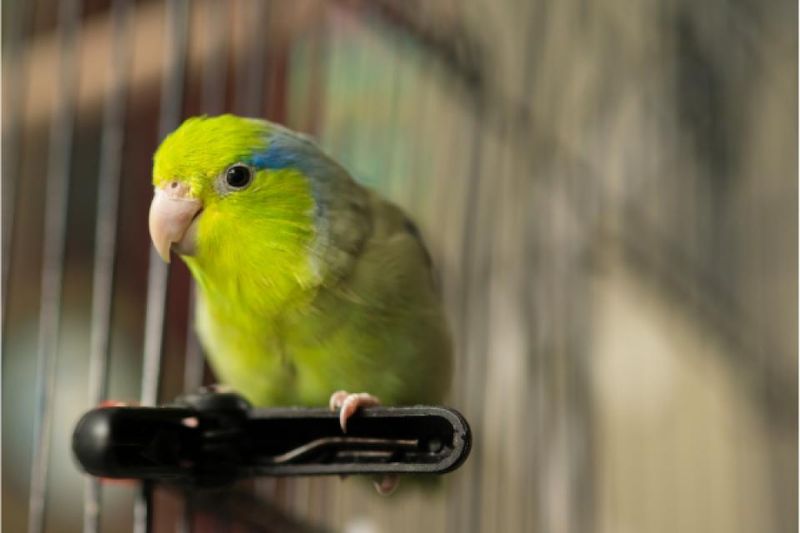
The noise level associated with budgies and parrotlets is a significant difference. Budgies, with their lively and social nature, often create a bustling atmosphere with their constant chirping and chatter. Parrotlets, while not entirely silent, produce less noise, making them more suitable for those who prefer a quieter household. This consideration is important for individuals sensitive to sound or living in environments where noise control is necessary. Understanding this difference aids in choosing the right bird for your living situation.
Bonding with Humans
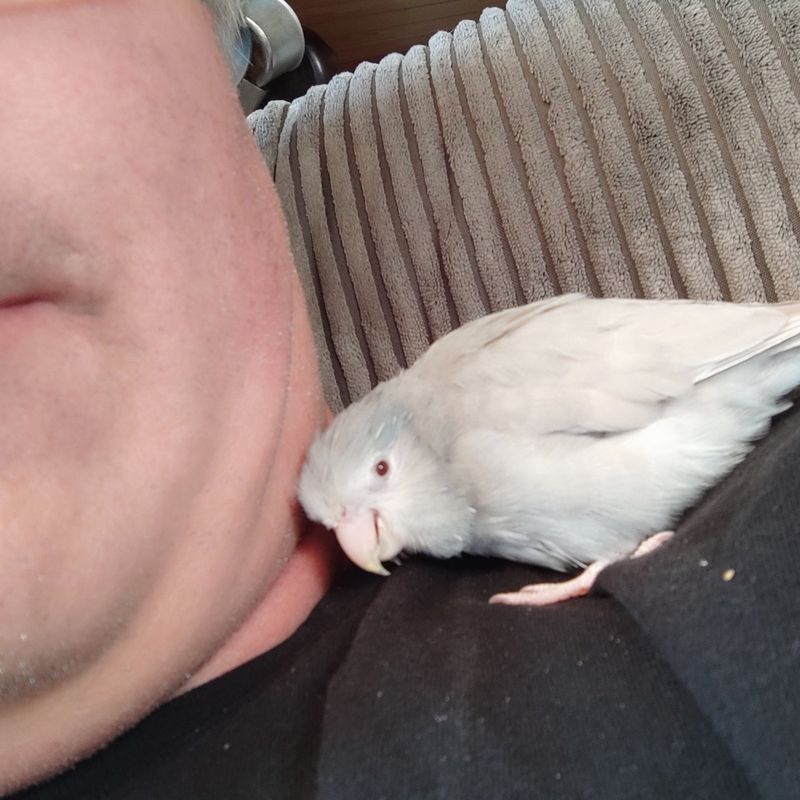
The way budgies and parrotlets bond with humans highlights another key difference. Budgies often form connections with multiple people, making them ideal for family environments where they can interact with various members. They are friendly and approachable. Parrotlets, however, usually bond closely with one person, forming a deep, exclusive attachment. This unique bonding characteristic affects how each bird is integrated into the household and cared for, emphasizing the personal nature of parrotlet relationships.
Exercise Needs
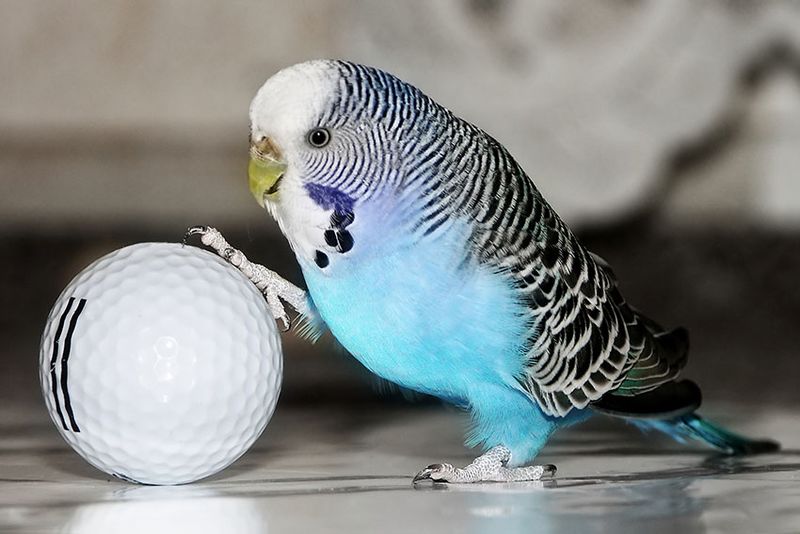
Exercise is crucial for both budgies and parrotlets, but their needs can vary. Budgies, being more social and active, require ample space to fly and play within their cage and during out-of-cage time. They enjoy interactive toys that stimulate their playful nature. Parrotlets, although smaller, also need regular exercise but may focus more on climbing and exploring within their environment. Providing suitable opportunities for physical activity is essential for maintaining their health and preventing boredom.
Health Concerns
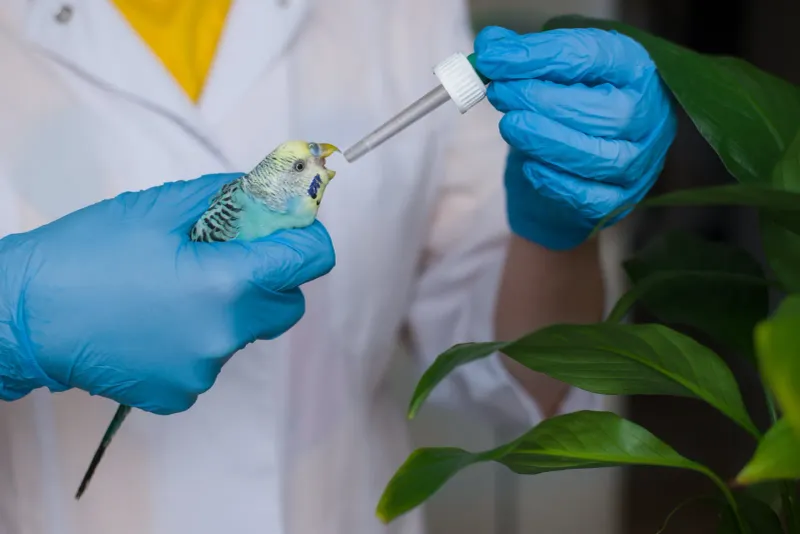
Health concerns for budgies and parrotlets can differ, influencing their care. Budgies are prone to conditions like obesity and respiratory issues, often requiring regular veterinary check-ups. Parrotlets, while generally hardy, might face challenges such as feather plucking and nutritional deficiencies. Awareness of these potential health issues is vital for providing appropriate care and preventative measures for each species. Regular health monitoring and a balanced diet are key components in maintaining their overall well-being.
Cost of Ownership
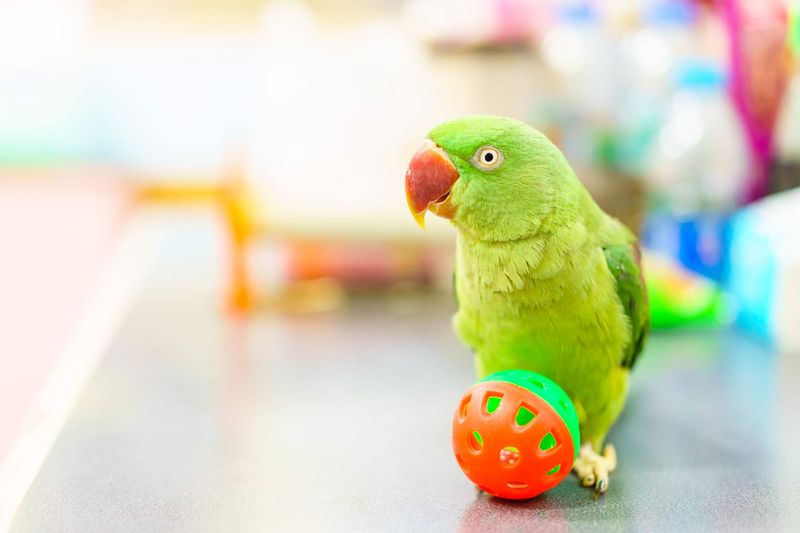
The cost of owning a budgie compared to a parrotlet can vary based on factors like cage size, diet, and medical care. Budgies, being widely available, might be less expensive initially, but their social nature could lead to higher ongoing costs for toys and enrichment. Parrotlets, while potentially having a higher purchase price, often require less in terms of social companionship expenses. Understanding these financial differences helps potential owners budget appropriately for the lifetime care of their chosen bird.

